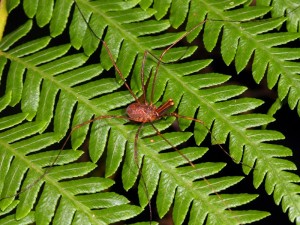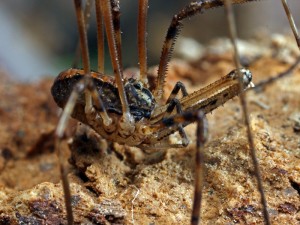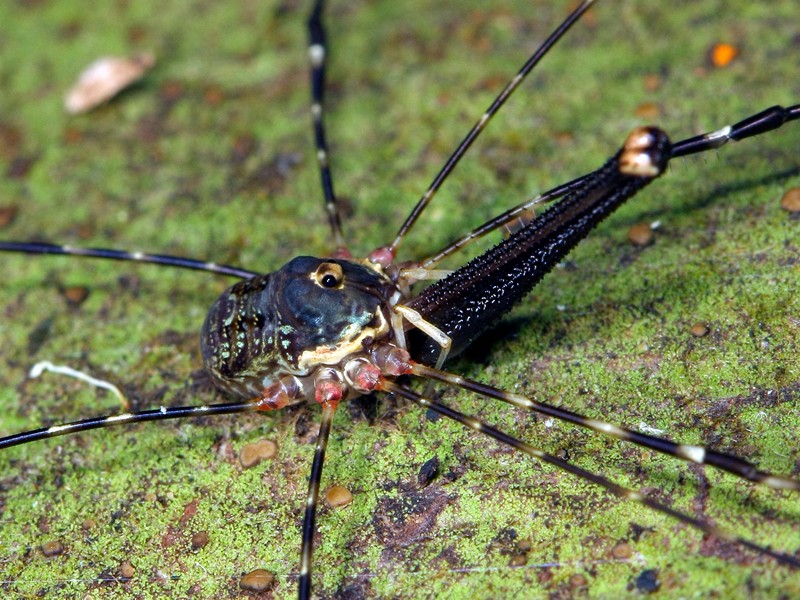Order Opilionida

dull colours and long legs.
Opilionida is another ancient order of arachinds that dates back 400 million years. They’re primitive, ungainly appearance belies their success and they have withstood the many trials of nature that have seen the demise of so many other creatures. But they are relatively quiet achievers because they don’t have the same presence as their relatives the spiders and scorpions, but I’m sure they are quite content with that.
At first glance, a harvestman looks very much like a long-legged spider, but there are some fundamental differences. They have a cephalothorax and abdomen like spiders do, but the connection between the two is much broader, so it looks like the two segments are fused into one. Spiders, on the other hand, have a very clear restriction between the cephalothorax and abdomen. Also, a harvestmen’s abdomen is made up of several connected segments, whereas as a spider’s abdomen is a single unit. And one other key difference is in the eyes. In most cases, spiders have four, six or eight eyes, but harvestmen have only a single pair. They do have small fangs but you will be glad to know they don’t have venom glands.

closer you get to them. This specimen
is from bushland near Melbourne, Victoria
Unlike spiders, harvestmen do not possess silk glands, so they don’t build webs. When they feed on other insects, they catch them either by ambushing them or by actively chasing them. What sets them apart from other arachnids is that their diet doesn’t just consist of invertebrates. Harvestmen are omnivorous, so plant matter is also on the menu, as well as other less savoury things like dead animals and bird droppings.
When a harvestman is threatened it can employ two defence mechanisms. One option is to detach a leg. This may not sound like a great idea, but the leg can continue twitching for several minutes after detachment, which hopefully keeps a predator distracted while the harvestman makes its escape. The other option is to secrete an unsavoury liquid from a scent gland to act as a repellent of sorts.
Another unique feature of harvestmen is their reproductive cycle. Rather than the male passing a spermatophore to the female, as is the case with scorpions and spiders, male harvestmen actually have a penis and copulate directly with the female. On top of this, there are a number of species where the males will construct a nest in which the females can lay their eggs and the males will be the ones who protect and clean the eggs until they hatch, which may take anywhere between three weeks and six months. In other species, the female lays her eggs in the soil and abandons them. The newly hatched young look pretty much like the adults and they will moult four to eight times as they develop. In general, harvestmen live for about a year.
Harvestmen are widely distributed in Australia. Most species are found in areas where there is plenty of moisture, but a few survive quite well in some of the more arid regions. I am disappointed to say I haven’t been able to accurately identify any of the harvestmen I have found so far. Hopefully, perseverance will pay off eventually.
~~~~~
Click here to see the Harvestman photo galleries
~~~~~
